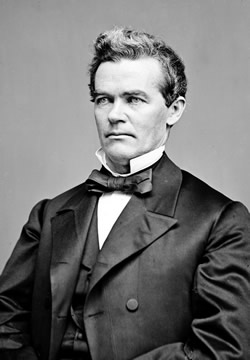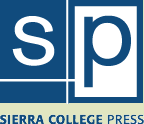John Conness
The precipitous walls of Yosemite Valley have been an inescapable enticement for the daring climber for decades. But they would not be available for the adventurous mountaineer and the much more timid onlooker if it were not for the initial efforts of one man—quite likely the most influential but anonymous figure in Sierra Nevada history—John Conness.
You know his handiwork—Yosemite Valley. John Conness was a critical participant in the establishment of a government-controlled Yosemite and in forging the principle that led to its ultimate status as a national park.
Still never heard of him? You are not alone, as the story of John Conness is largely lost in the shadows today, but his impact continues to resonate throughout the world.
Early Goldseeker
John Conness was born in Ireland in 1821 and immigrated to the United States in 1836. Barely surviving in New York City, John Conness joined the thousands of hopeful goldseekers headed to California in 1849. As did many other 49ers, Conness found gold mining a difficult pursuit, and he ultimately became a merchant in the little Sierra community of Georgetown. Conness operated a store selling supplies to miners.
California was a new state in the 1850s and Conness gravitated toward politics. Conness served in the California State Legislature and ran unsuccessfully for Lt. Governor and Governor in 1859 and 1861. In 1863, John Conness was selected by the California State Legislature to serve as the state’s U.S. Senator.
Birth of Yosemite
On March 28, 1864, Conness introduced a bill, Senate Bill 203—"The Yosemite Valley Grant Act."—the legislation would by federal action, grant to the State of California the Yosemite Valley and the Mariposa Grove of Big Trees.
In the debate on the bill, Conness famously stated that the grant areas would be, in his words, "for all public purposes worthless, but … constitute, perhaps, some of the greatest wonders of the world. The object and purpose is to make a grant to the State, on the stipulation contained in the bill that the property shall be inalienable forever, and preserved and improved as a place of public resort." No money was appropriated in support of the bill and no supporting legislation provided for federal administration of the areas. It did not establish the National Park, which came later in 1890, but it did institute the concept that protecting places of natural beauty should be a national priority – an idea that led to the founding of the first national park anywhere on Earth at Yellowstone in 1872. An inspiration that would spread to the rest of the world—arguably the best American export. 
The Yosemite Valley Grant Act passed, and on June 30, 1864, during the depths of the bloody Civil War, it was signed by President Abraham Lincoln.
Lincoln's Friend
John Conness and Lincoln held each other in high regard. In fact, Conness was a pallbearer at Abraham Lincoln’s funeral in April 1865. Conness only served one term in the Senate. He retired to Boston, Massachusetts, and lived into the 20th century. He died at the ripe old age of 87 in 1909.
John Conness is commemorated by several landmarks in the Sierra Nevada—including the nearly 13,000 foot Mount Conness near the Yosemite boundary, and the Conness Glacier.
Not bad for a guy no one knows about today.
image Credits:
- Senator John Conness Source: Collections of the University of California, Berkeley, Bancroft Library
- Senator John Conness Source: Collections of the Library of Congress, LC-DIG-cwpbh-01372
